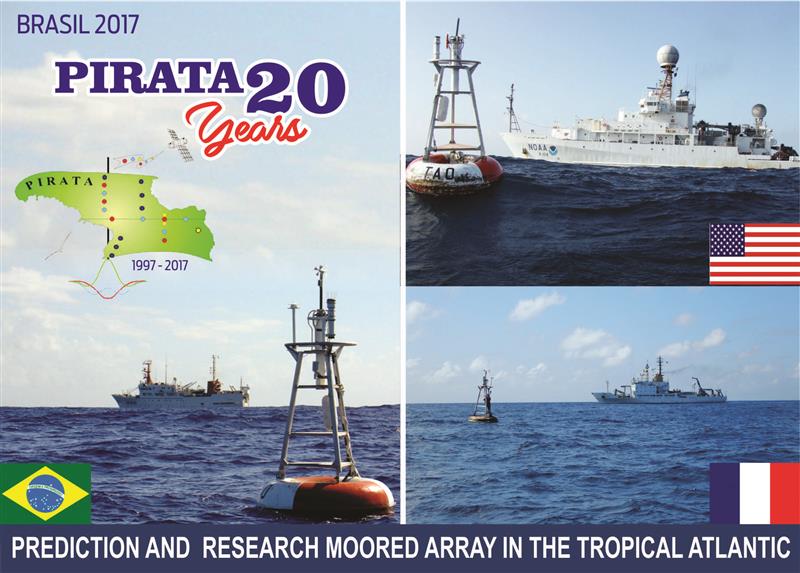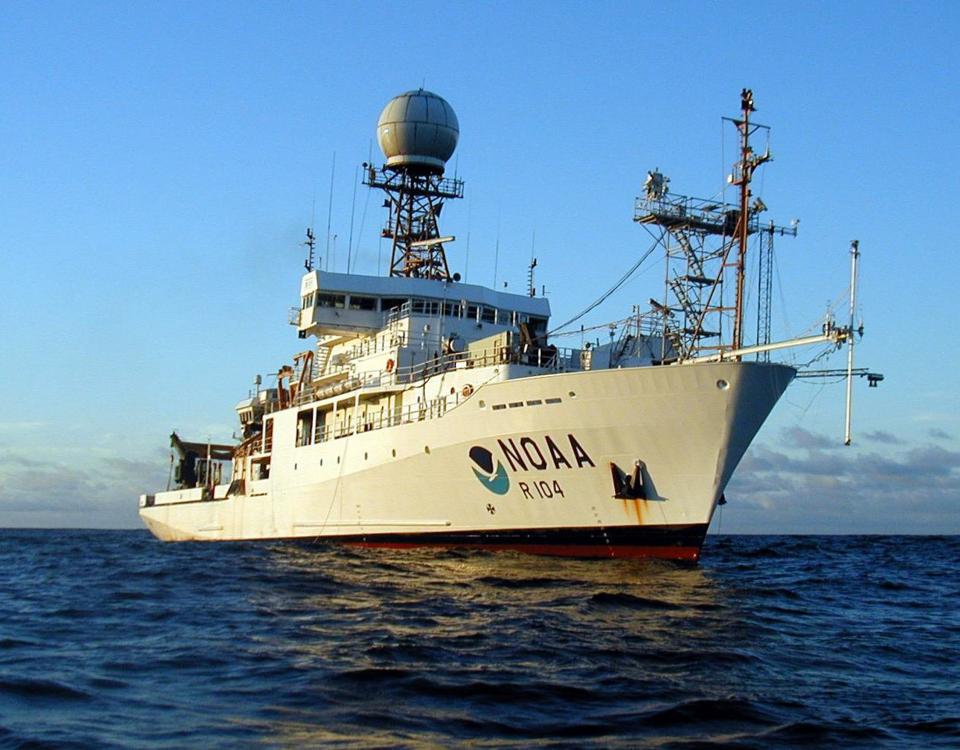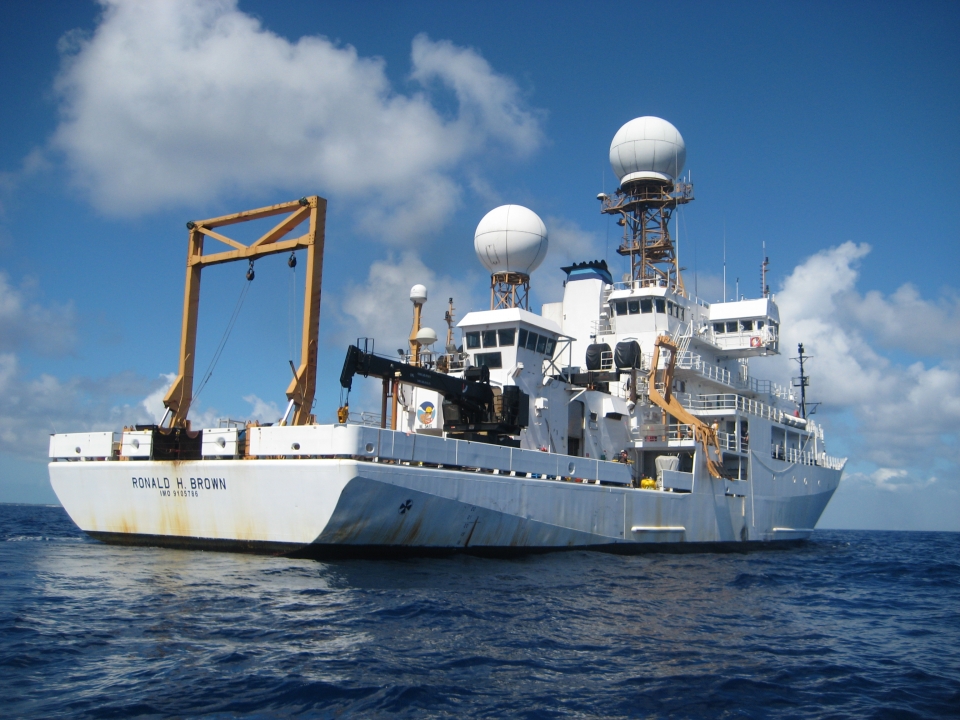NOAA Ship Sets Sail to Boost Ocean Data for Weather Prediction
[NOAA Ship Ronald H. Brown servicing a buoy]
From NOAA
NOAA Ship Ronald H. Brown steamed out of Charleston, South Carolina on February 16 for a multi-stage trip around the world to improve ocean data that informs United States and global weather prediction.
Ron Brown’s first mission will be to investigate ocean currents in the North Atlantic Ocean that influence global climate. From there, NOAA’s ocean workhorse will journey south to the tropical Atlantic Ocean to replace four instrumented observing moorings in the Prediction and Research Moored Array in the Atlantic or PIRATA. The PIRATA moorings are part of a larger tropical observing system of buoys that provides ocean and atmospheric data that helps the U.S. and other nations predict droughts, floods, hurricanes and other weather affecting millions of people in the Americas and Africa.

[Brazil's postal service issued this stamp to celebrate 20 years of collaboration between Brazil, France and the United States on the Prediction and Research Moored Array in the Atlantic, or PIRATA. Courtesy of the Brazil Postal Service]
Brazil recently issued an official postage stamp with photographs of the Ron Brown and vessels from Brazil and France to celebrate 20 years of collaboration between Brazil, France and the United States on the PIRATA ocean observing system.
From the waters of the Atlantic, the Ron Brown will travel around the southern tip of Africa and into the Indian Ocean, where it will conduct two major research campaigns to advance ocean observing.

[NOAA ship Ronald H. Brown at sea]
The first campaign will be to sample ocean and atmospheric conditions in the western Indian Ocean, which has not been sampled since 1995. This new data will help scientists better understand how environmental changes in the Indian Ocean may be contributing to sea level rise, expanding ocean dead zones and more intense monsoons in the region.
The second campaign is to launch three new moorings in the Arabian Sea as part of the Research Moored Array for African-Asian-Australian Monsoon Analysis and Prediction or RAMA, which is designed to understand the role of the Indian Ocean in driving monsoons. One third of the world’s population depends on monsoon-driven rainfall for agricultural production, so improving our understanding and ability to predict monsoons has been a longstanding objective of the international scientific community.

[NOAA Ship Ronald H. Brown off the starboard stern. Photo taken from the workboat.]
Edited for WeatherNation by Meteorologist Mace Michaels